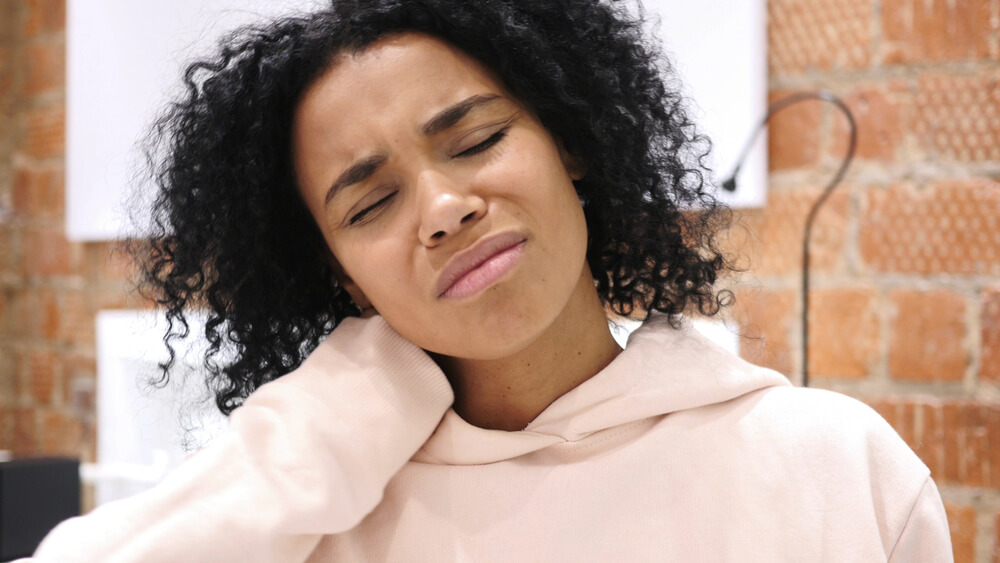Almost everyone suffers from a headache at some point in their life. Some people are less fortunate than others and suffer from headaches every day or chronic headaches. Chronic describes the frequency of headaches experienced, at least 15 days a month for at least three months. Headaches can be caused by many triggers depending on the type of headache. The most common headache is the tension headache. Tension headaches plague 1 in 3 men and 1 in 2 women.
What causes headaches?
A variety of triggers can cause headaches. Causes of headaches can include:
- Stress.
- Anxiety.
- Depression.
- Whiplash.
- Pinched nerve.
- Snoring.
- Arthritis.
- Allergies/sinus issue.
- Poor posture.
- Muscle spasm.
- Sleep disruption.
- Overmedicating.
- Obesity.
- Traumatic brain injury.
- Dehydration.
What are some common types of headaches?
Not all headaches are the same. Different types of headaches can have similar triggers and symptoms. The most common types of headaches include:
- Cluster headache — Cluster headaches are so called due to their location and timing of experience. Cluster headaches happen around or behind one eye or side of the face at a time and in a series of headaches. Cluster headaches are most common in spring and fall. Men are more likely to suffer from cluster headaches than women.
- Caffeine headache — Caffeine headaches can happen due to too much or abruptly decreased caffeine consumption. Caffeine can also trigger migraine headaches. Caffeine headaches can happen every day if caffeine consumption isn’t maintained.
- Hormone headache — Women more commonly experience hormone headaches. This can be due to hormonal fluctuations due to menstruation, birth control, and pregnancy effects on estrogen production levels.
- Post-traumatic headache — Post-traumatic headaches occur as a result of trauma or injury. Pain can be similar to tension or migraine headaches and can last six to 12 months after the event.
- Allergy or sinus headache — Those plagued by chronic allergy or sinus issues are likely also to experience headaches felt in the sinus region of the head.
- Migraine headache — Migraine headaches can have a debilitating effect on your life. They are usually experienced on one side of the head and cause a throbbing pain that can be accompanied by nausea, vomiting, light sensitivity, sound sensitivity and visual auras. Women are more likely to experience migraines than men. Those who have post-traumatic stress disorder also have an increased risk for migraines.
- Tension/stress headache — Anyone can experience a tension headache. They are characterized by a dull or aching sensation all over the head and are typically a result of stress.
- Hypertension headache — If you have high blood pressure, you should be aware of headaches caused by hypertension. Hypertension headaches can signal an emergency due to being caused by dangerously high blood pressure levels. This headache can have a pulsating sensation, which worsens with activity, being felt on one or both sides of the head.
- Pinched nerve/cervicogenic headache — Cervicogenic headaches are due to a pinched nerve in the neck. They can cause neck stiffness and often cause pain on one side of the head, originating from the base of the skull.
How can physical therapy help everyday headaches?
If everyday headaches are affecting your quality of life, physical therapy may be able to help. Physical therapy can:
- Help decrease the length, intensity or frequency of your headaches.
- Help lower your medication usage.
- Help boost your mobility and function if muscle tension or a spasm is being experienced.
- Help to improve your quality of life.
A physical therapist may use one or a combination of modalities to help ease your headaches best. Physical modalities for everyday headaches can include:
- Manual therapy — Manual therapy techniques can help reduce joint or muscle stiffness or spasms causing or as a result of your headaches. This can be done through soft tissue mobilization, myofascial release or joint mobilization.
- Heat or cold therapy — Heat and cold therapy can both be beneficial if your headache is caused by or you’re experiencing muscle stiffness, spasms, or inflammation. Heat therapy can help relax muscles, while cold therapy can help with inflammation. Your physical therapist will give you guidelines on how to use heat/cold therapy at home.
- Electrical stimulation — Electrical stimulation with a TENS unit can help reduce pain, decrease spasms and improve circulation.
- Trigger point therapy — Trigger points are tight knots in the soft tissue. Trigger points in the neck can cause headaches. Trigger point therapy is a hands-on technique where a physical therapist manually applies gentle pressure on the trigger point. This pressure can help the muscle relax and help relieve headache pain.
SSOR can help you find relief from everyday headaches
Our SSOR team of certified physical therapists can help you find relief from your everyday headaches. You can come in for a free screening to evaluate the cause of your headaches. Our movement experts can help customize a treatment plan to target any musculoskeletal problems that may be causing your everyday headaches.
Contact us today for more information or to schedule an initial appointment.

